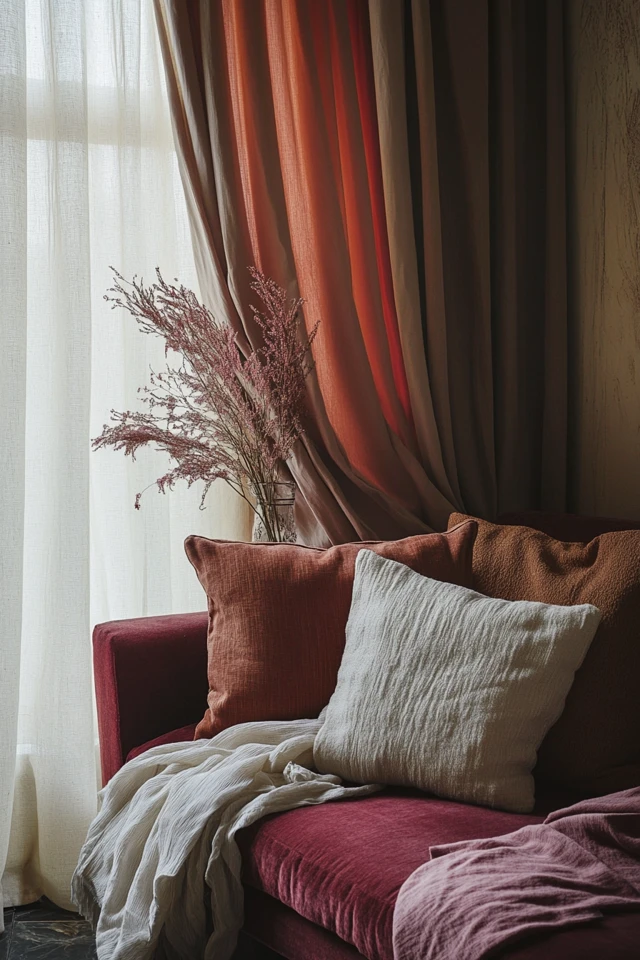Textiles are the unsung heroes of interior design. They’re versatile, affordable, and have the power to completely transform the look and feel of a space. I discovered this magic during a particularly dreary winter when my room felt cold—both literally and aesthetically. I decided to add a chunky knit throw, a textured area rug, and some velvet cushions. The result? A cozy sanctuary that instantly made me feel at home. From that moment, I became a believer in the transformative power of textiles.
Whether you’re looking to add warmth, color, texture, or pattern to your aesthetic room, textiles are your go-to solution. In this guide, we’ll explore how to use textiles—from rugs and curtains to bedding and throw pillows—to create a room that’s stylish, inviting, and uniquely yours.
Why Textiles Are Essential in Room Design
1. Add Warmth and Comfort
Textiles like rugs, blankets, and curtains make a room feel cozy and lived-in, perfect for creating a welcoming vibe.
2. Introduce Texture
From soft knits to sleek silks, textiles add layers of texture that make a room feel dynamic and multi-dimensional.
3. Incorporate Color and Pattern
Textiles are an easy way to experiment with bold colors or patterns without committing to permanent changes.
4. Define Zones
Rugs and other large textiles can help delineate different areas in a room, especially in open layouts or multi-functional spaces.
1. Start with a Statement Rug
A rug is often the foundation of a room’s design, setting the tone for the entire space.
- Bold Patterns: Use a patterned rug to introduce color and interest, especially if your furniture is neutral.
- Textured Options: Opt for shag or woven rugs to add warmth and dimension to minimalist or modern spaces.
- Layering: Try layering a smaller, patterned rug over a larger neutral one for a cozy, bohemian vibe.
Placement Tip: Ensure your rug is large enough to anchor the furniture in the room. For example, in a living room, the front legs of your sofa and chairs should sit on the rug.
2. Dress Your Windows with Curtains or Drapes
Window treatments can dramatically change the look and feel of your room.
- Sheer Curtains: Allow natural light to filter in while creating a soft, dreamy aesthetic.
- Heavy Drapes: Add drama and elegance with velvet or linen drapes in rich, saturated tones.
- Patterned Panels: Use curtains with bold prints to inject personality into the space.
Layering Tip: Combine sheer and opaque curtains for flexibility—light and airy during the day, cozy and private at night.
3. Transform Your Bed with Luxurious Layers
Your bed is likely the focal point of your room, and textiles are the easiest way to elevate it.
- Mix and Match Fabrics: Pair cotton sheets with a velvet throw or a faux fur blanket for a rich, tactile experience.
- Throw Pillows: Add a mix of sizes, shapes, and textures for a plush, layered look.
- Duvet Covers: Experiment with bold patterns or soft pastels to refresh your bed’s appearance instantly.
Pro Tip: Change your bedding seasonally—opt for lightweight linen in summer and cozy flannels in winter.
4. Add Dimension with Throw Pillows and Blankets
Throw pillows and blankets are like jewelry for your room—they’re small details that make a big impact.
- Textured Throws: Use chunky knit or fringed blankets to add warmth and visual interest to your bed or sofa.
- Pillow Combinations: Mix patterns, colors, and fabrics for a cohesive but dynamic look.
- Seasonal Swaps: Switch out your throw pillows and blankets to keep your room feeling fresh year-round.
Placement Tip: On a sofa, arrange throw pillows in odd numbers (e.g., three or five) for a balanced yet casual look.
5. Define Spaces with Area Rugs
Rugs are not just for aesthetics—they also help define different areas in a room.
- Living Room: Use a large rug to ground your seating area.
- Bedroom: Place a rug under your bed, leaving it visible on either side for a cozy, finished look.
- Workspace: Add a small rug under your desk to create a designated work zone.
Pro Tip: Use washable rugs in high-traffic areas for easy maintenance.
6. Experiment with Wall Textiles
Textiles aren’t just for floors and furniture—think vertically!
- Tapestries: Hang a bold, patterned tapestry to create a statement wall.
- Macramé Wall Hangings: Perfect for boho or minimalist spaces, these add texture and visual interest.
- Fabric Panels: Use fabric stretched over wooden frames as DIY wall art.
Pro Tip: Choose textiles that tie into your room’s color palette to maintain cohesion.
7. Incorporate Floor Cushions and Poufs
Floor cushions and poufs are both functional and stylish, making them a great addition to any aesthetic room.
- Bohemian Vibes: Choose poufs with woven textures or ethnic patterns.
- Modern Minimalism: Opt for sleek, solid-colored cushions in neutral tones.
- Functional Seating: Use them as extra seating for guests or as a footrest for added comfort.
Pro Tip: Stack a few floor cushions in different colors and patterns for a laid-back, layered look.
8. Add Texture to Your Walls
Don’t forget that walls can benefit from textiles too!
- Fabric Wallpaper: Use peel-and-stick fabric wallpaper for a textured, patterned look.
- Fabric-Covered Headboard: If your bed is against a wall, a fabric-covered headboard adds both comfort and style.
- Hanging Quilts: Repurpose vintage quilts as wall décor for a touch of nostalgia.
Pro Tip: Use wall-mounted curtain rods to hang lightweight fabric panels for a unique DIY accent wall.
Picture Gallery
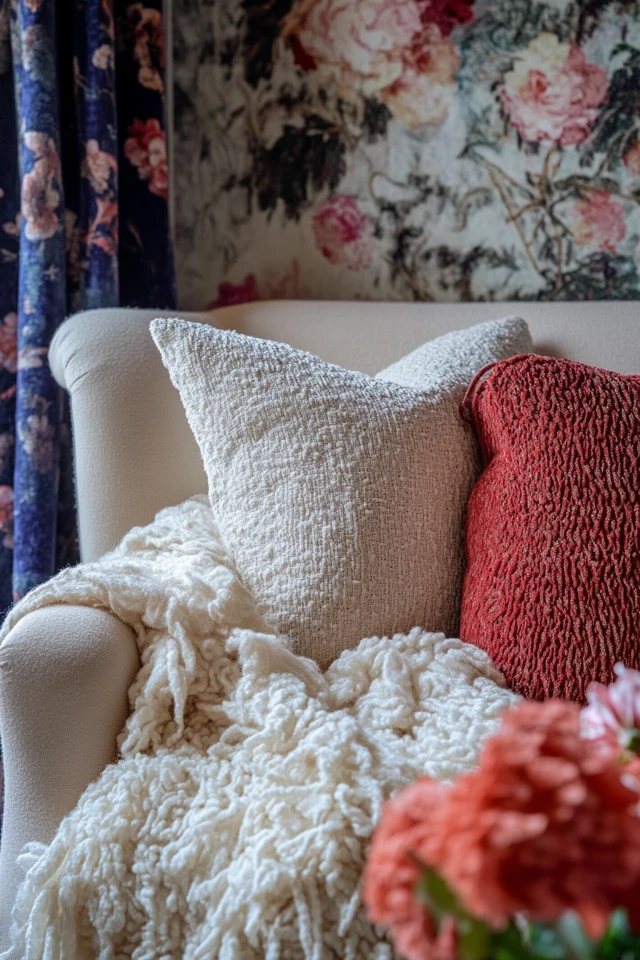

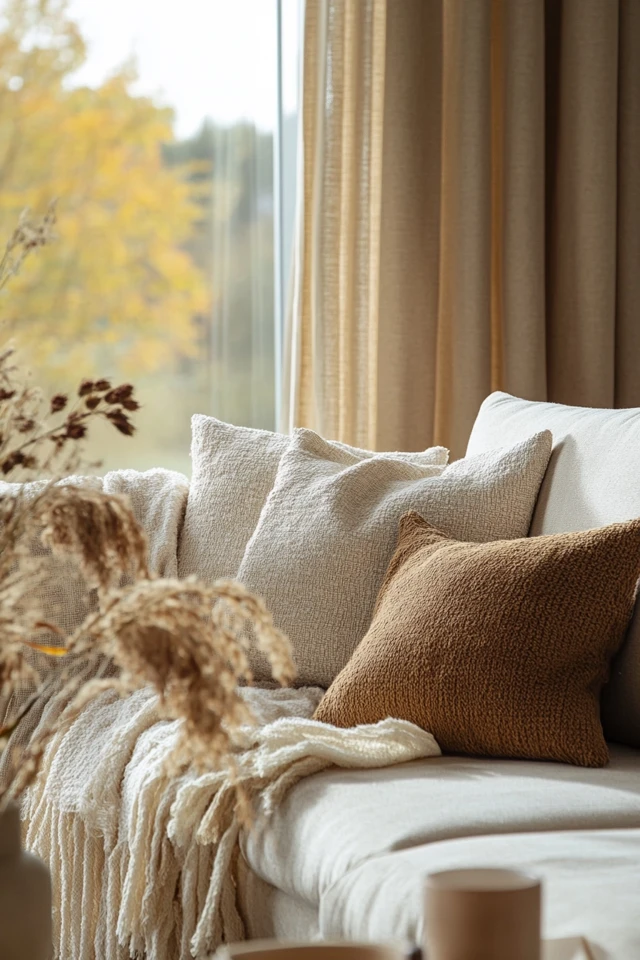
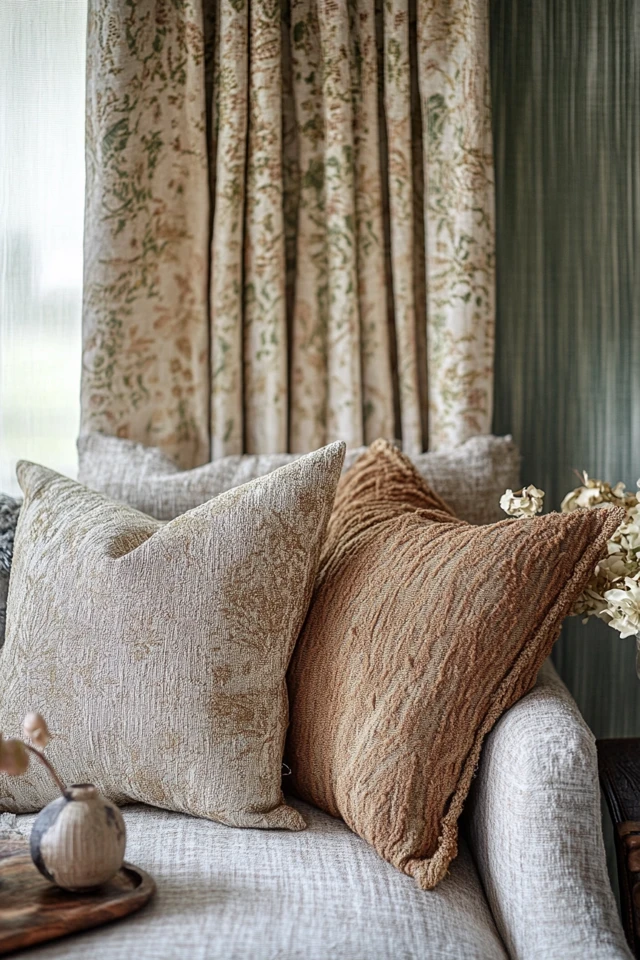
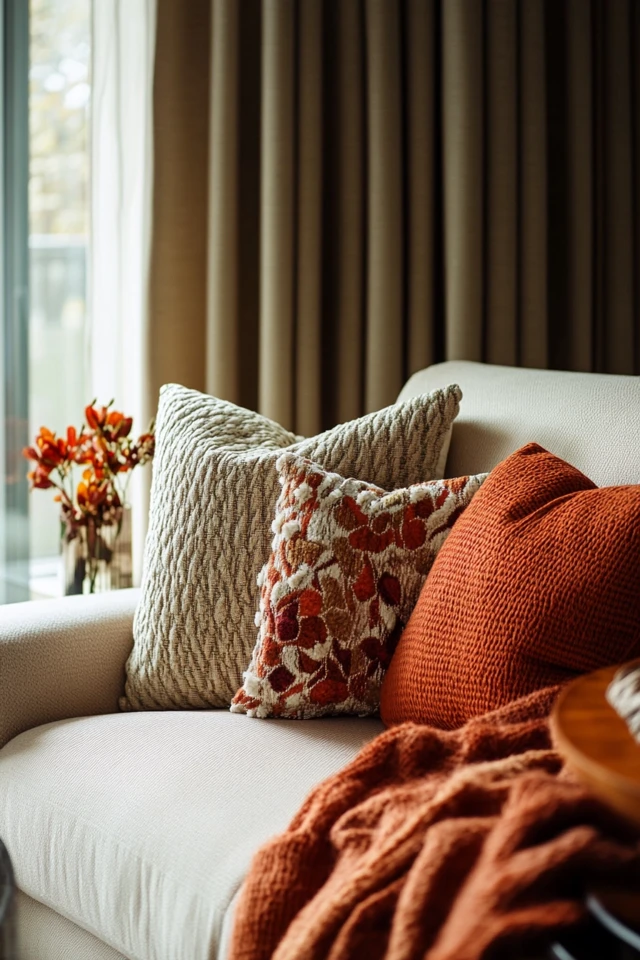
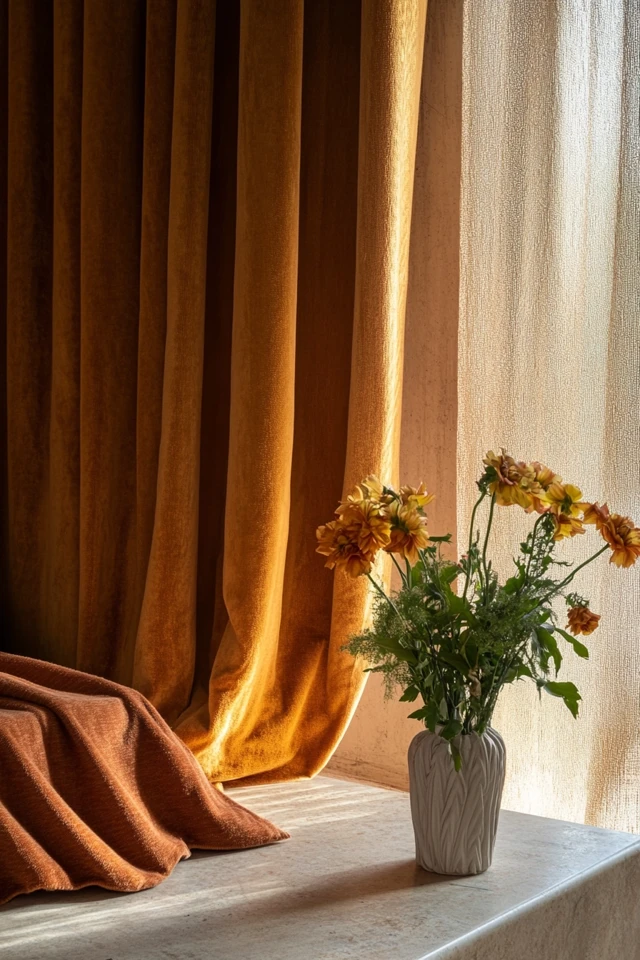
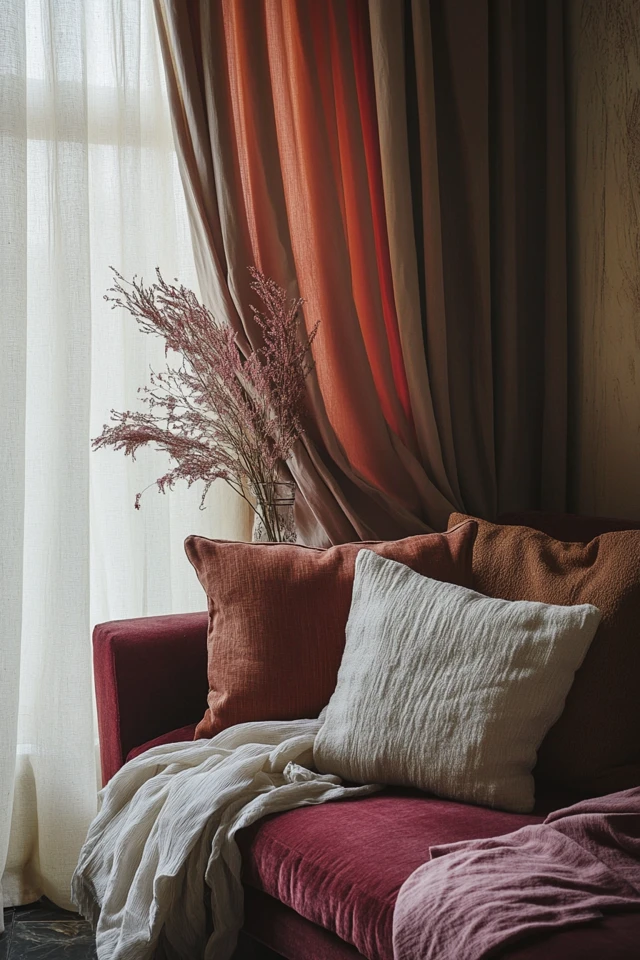
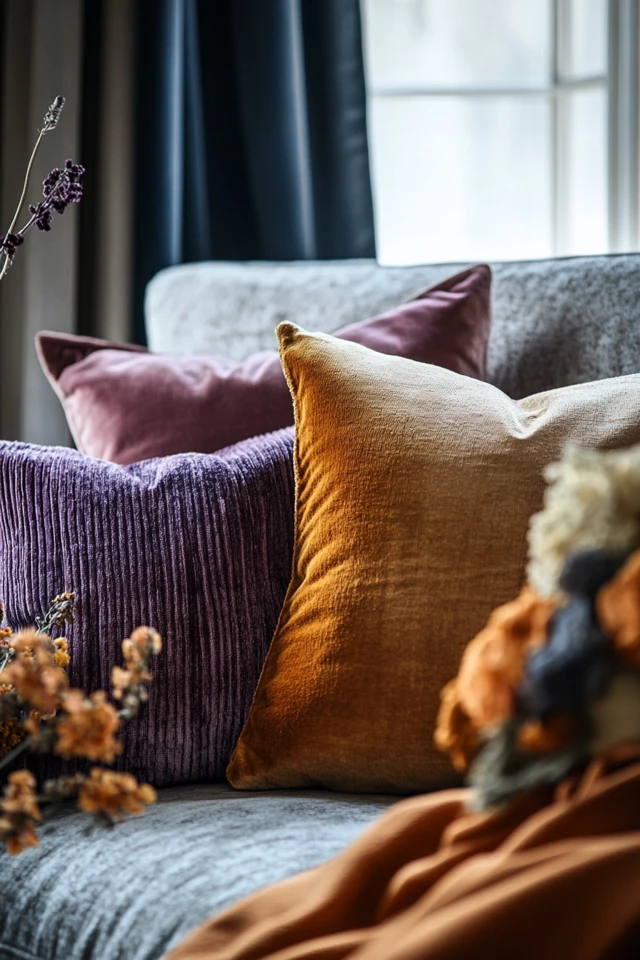
How to Choose the Right Textiles
1. Consider Your Color Palette
Stick to 2-3 main colors and a few accent shades to ensure your textiles complement your room’s overall aesthetic.
2. Mix Textures for Depth
Combine smooth materials like silk or linen with rougher textures like wool or jute for a well-balanced look.
3. Keep Function in Mind
Choose durable fabrics for high-traffic areas and machine-washable options for easy care.
4. Play with Patterns
Mix bold prints with subtle patterns to create visual interest without overwhelming the space.
Tips for Maintaining Your Textiles
- Vacuum Rugs Regularly: Prevent dirt buildup and extend their lifespan by vacuuming once a week.
- Spot Clean Stains: Use gentle, fabric-safe cleaners to tackle spills or stains immediately.
- Wash Throws and Pillows: Launder removable covers regularly to keep them fresh.
- Rotate Rugs: Rotate area rugs every few months to prevent uneven wear.
Conclusion
Textiles are the secret weapon of interior design. They allow you to completely transform your room with minimal effort, adding color, texture, and personality to your space. Whether you’re layering rugs, styling your bed with cozy blankets, or hanging a tapestry on the wall, textiles offer endless opportunities to make your room feel uniquely yours.
Start small—add a new throw pillow or rug—and see how it changes the vibe of your space. Once you experience the magic of textiles, you’ll find yourself reaching for them every time you want to refresh your room.
So, go ahead and play with patterns, textures, and colors. Your aesthetic room is just a few textiles away from being transformed into the cozy, stylish haven of your dreams.
FAQs
1. What are the best textiles for a cozy room?
Opt for soft materials like wool, faux fur, and chunky knits to create a warm and inviting atmosphere.
2. How can I mix patterns without clashing?
Stick to a cohesive color palette and vary the scale of the patterns (e.g., pair large florals with small geometric prints).
3. How do I clean delicate textiles?
Spot clean with a mild detergent or use a gentle cycle on your washing machine if the fabric is machine-washable.
4. What’s the easiest way to update a room with textiles?
Swap out your throw pillows, blankets, or curtains to give your room a fresh look without a major overhaul.
5. How do I keep my textiles looking new?
Regularly clean and rotate your textiles to prevent wear and tear, and store seasonal items properly when not in use.

